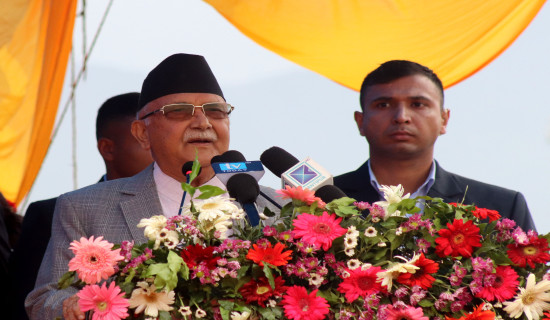- Monday, 26 August 2024
Utilise Foreign Reserves
Amid the efforts to resuscitate the recession-hit economy, the country has maintained sufficient amount of foreign reserves, indicating that the health of overall financial system is in a good shape. This is indeed an encouraging news in view of shrinking revenues, low capital expenditure, soaring unemployment and trade deficit, and high inflation. Nonetheless, one may argue that when the nation derives its economic lifeline from remittances and import-based revenues, the satisfactory quantity of reserves asset alone may not guarantee the economic rebound. Manufacturing and agriculture, considered the hardcore economy, are not faring well. This is a reason why the country is unable to provide employment to the youths who are leaving for foreign countries for better prospect of livelihoods. The economy may be further weighed down when the number of people living the below poverty climb up due to increasing number of natural disasters.
Against this backdrop, the country's foreign exchange reserves have reached $ 15.27 billion by the end of the last Fiscal Year 2023/24, a 28 per cent increase from $ 11.74 billion a year earlier. They can cover the imports of goods and services for 13 months, according to the Nepal Rastra Bank (NRB)'s annual report. The policy of past governments to cut the imports as well as the surge in remittances have contributed to the huge accumulation of the forex, which have positive implications for the economy. They primarily support in financing imports, repaying external loan and helping people go abroad for study, tourism and health services. Moreover, they will boost the confidence of foreign investors. The government can also use the foreign reserves to fund the big development projects essential to create jobs, enhance public services and increase income.
Apparently, idea of mobilising the foreign reserves sounds pragmatic as the flow of foreign direct investment is not promising. The country gets around 5 per cent interest on the forex reserves collected in domestic and foreign banks. Some experts suggest using foreign reserves on construction- and production-based projects. The potential areas for investment of forex include road and transportation infrastructure, hydropower and transmission lines. They hold potential to boost tourism, foreign trade and employment. The private sector should be given soft loans to execute the projects as it is believed to show efficiency and complete works within the given timeframe. As the raw materials, equipment and capital goods are imported for the implementation of the projects, they also promote technology transfer.
However, it is necessary to have a caution when it comes to spending the foreign currencies on the productive sector because the trend of forex earning is not predictable. The remittances have become the main source of foreign reserves followed by the export trade, foreign tourists, FDI and foreign aid, loans and grants. The country is not earning much from foreign trade in the absence of export items with comparative edge. Instead, a whopping amount of foreign currencies are paid for the imported goods. Similarly, the revenues from tourism pale in comparison with the amount of foreign currencies that Nepali tourists and students going abroad take with them. The volumes of foreign grants are also dwindling while a hefty sum of money is spent on repaying the capital and interest of the government loans. As the nation has currently witnessed stability, it is not otherwise to mobilise the foreign reserves for running the result-oriented development projects.

















